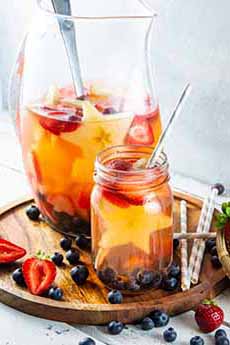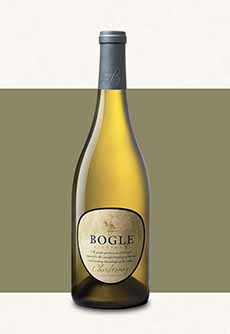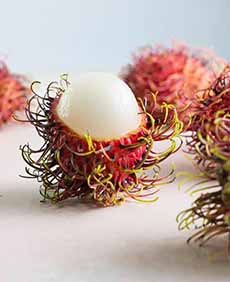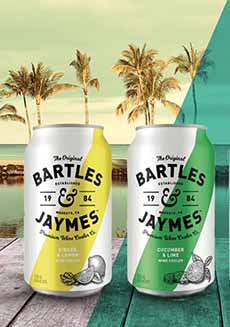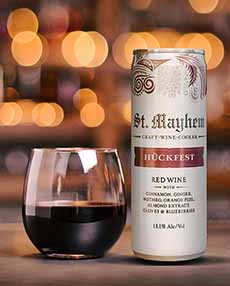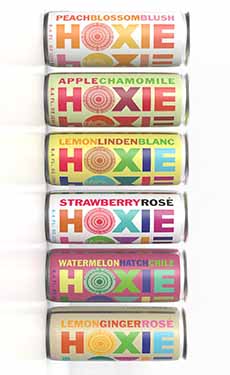Wine Cooler Vs. Sangria: The Difference & A July 4th Recipe
|
|
A wine cooler is an alcoholic beverage made from wine and fruit or fruit juice, often with a carbonated beverage and some sweetener. But when you look at the ingredients in the recipe below, what’s the difference between a wine cooler and sangria? We have the answer below, along with the history of the wine cooler. This refreshing cooler recipe below is by Melissa’s Executive Chef Tom Fraker. It’s filled with juicy fruits. The reason it’s called a July 4th cooler is the star-cut apples that serve as playful decor, while also providing sweet apple juice and a nice crunch when you eat the wine-soaked fruit after finishing the drink. And although the rambutan in the recipe isn’t a common fruit to add to a cooler, you will be surprised at how nicely the floral accents blend with the other fruit flavors. 1. COMBINE the wine, lime juice, and agave in a large pitcher; stir to combine. 2. ADD the strawberries, rambutan, and blueberries to the pitcher. 3. SLICE the apple crosswise and, using a star-shaped cookie cutter, cut stars from the apple slices. No star-shaped cutter? Cut them freehand. Add the apple stars to the pitcher. 4. PLACE the pitcher into the refrigerator and chill overnight. 5. TO SERVE, stir the sparkling water into the pitcher. Add ice to drinking glasses. Pour in the cooler and top with some of the fruit. A wine cooler is a modern reinvention of sangria, a drink that has been made in Spain for more than 1,000 years (here’s the history of sangria). Sangria is a cold drink made with wine, fruit, a sparkling element† like club soda, ginger ale, or sparkling wine, and sometimes, a sweetener and/or a liqueur or spirit like brandy. Leave out the spirit, and you have a wine cooler. (A wine spritzer is simply wine and carbonated water.) The original wine cooler brand was California Cooler, a drink made by Michael Crete, who originally mixed together white wine with fruit juice, and club soda and brought it to the beach to share with his friends. Everyone loved it. At the time, Crete was working in wine and beer sales, and he saw an opportunity. In 1981 he teamed up with a friend and started a company to make what they called California Wine Cooler. It was sold in a 12-ounce green glass bottle with foil around the neck, looking like a bottle of Beck’s beer. While there was a long history of wine mixed with juice—not just in sangria but in wine spritzers (which originated in early-19th-century Venice—here’s the history of wine spritzers)—California Cooler was the first bottled, ready-to-drink version. It took off, selling 10 million cases in 1984. In 1985, Crete and his partner sold the company to Brown-Forman. By that time, the category had exploded: There were now more than 100 different coolers across America [source]. In that same year, wine giant Ernest & Julio Gallo launched the Bartles & Jaymes brand, which soon took over the top spot in the category from California Cooler. Other big boys came to play. Seagram’s, which took over the #2 spot, hired Bruce Willis for its commercials. Sun Country Wine Coolers, also owned by Gallo, hired celebrities like Ringo Starr, Grace Jones, and Charo. But packaged wine coolers turned out to be a fad. The market peaked just two years later, in 1987. Sales fell by double-digit percentages. Brands big and small discontinued their lines; California Cooler bit the dust in the early 1990s (Bartles & Jaymes still exists). In 1991, a steep increase in federal excise taxes on wine made wine coolers a losing proposition. Seagram’s and others discontinued their wine coolers and launched cheaper malt liquor-based beverages, in a new category that soon saw brands like Mike’s Hard Lemonade, Seagrams Escapes, Smirnoff Ice, and Zima. But now, some 30 years later, a new generation of wine coolers is popping up. Calling themselves spritzers or wine cocktails and positioning themselves as artisan or craft drinks are brands like Blossom Brothers, Hoxie, Pampelonne, and St. Mayhem. They favor more modern flavors that are bittersweet, botanical, herbal, or spicy. If the flavors are fruit, they bypass the sugary fruity cooler flavors of yore in favor of two-flavor notes like white peach and jasmine flower or pink grapefruit and honeycomb (Blossom Brothers), grapefruit elderflower, and lemon ginger rosé (Hoxie) [source]. Pamplonne, which looks like a French brand in its packaging and flavors, and is made with French wine, was started by two Americans and is produced in Modesto, California. The “new coolers” are largely in 8.4-fluid-ounce cans, not bottles. Things have come full circle. *In the beginning, sangria wasn’t sparkling. Carbonation wasn’t invented until 1767, and the oldest recorded sparkling wine is Blanquette de Limoux, which was apparently invented by Benedictine monks in the Abbey of Saint-Hilaire, near Carcassonne, in the South of France, in 1531 [source]. †Fresh rambutan is available from Melissa’s. If you don’t have rambutan (fresh or canned) you can substitute equal amounts of lychees, fresh or canned. Lychees are sweeter and have a more floral bouquet, rambutan is fleshier. They are both members of the soapberry botanical family (Sapindaceae), along with the longan fruit and the horse chestnut. Here are more of the differences between lychee and rambutan. Can’t find either? Substitute peaches or nectarines. |
|
|
CHECK OUT WHAT’S HAPPENING ON OUR HOME PAGE, THENIBBLE.COM.
|
||
